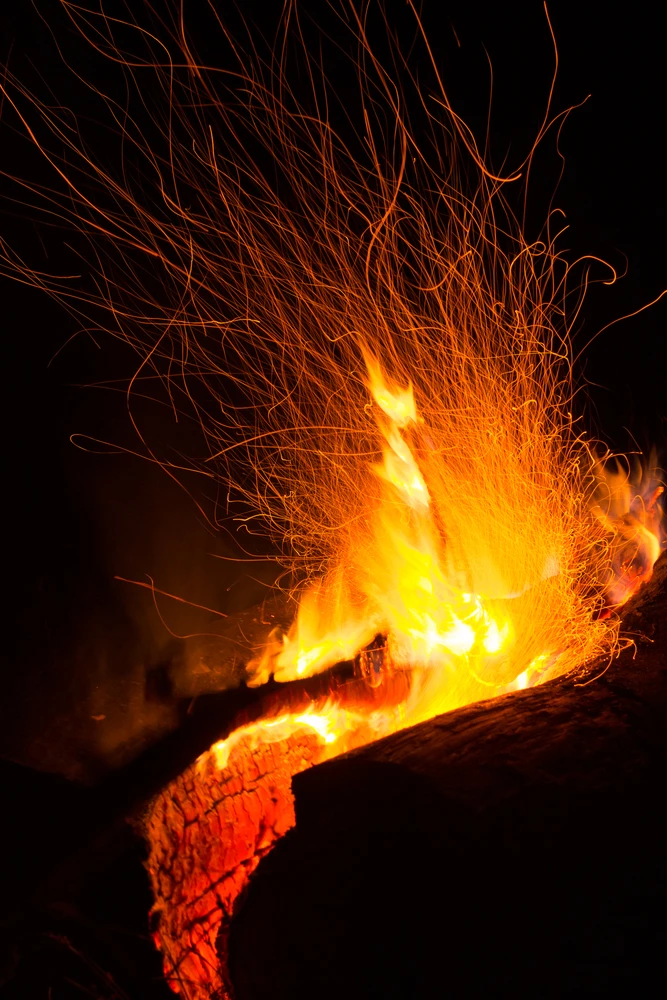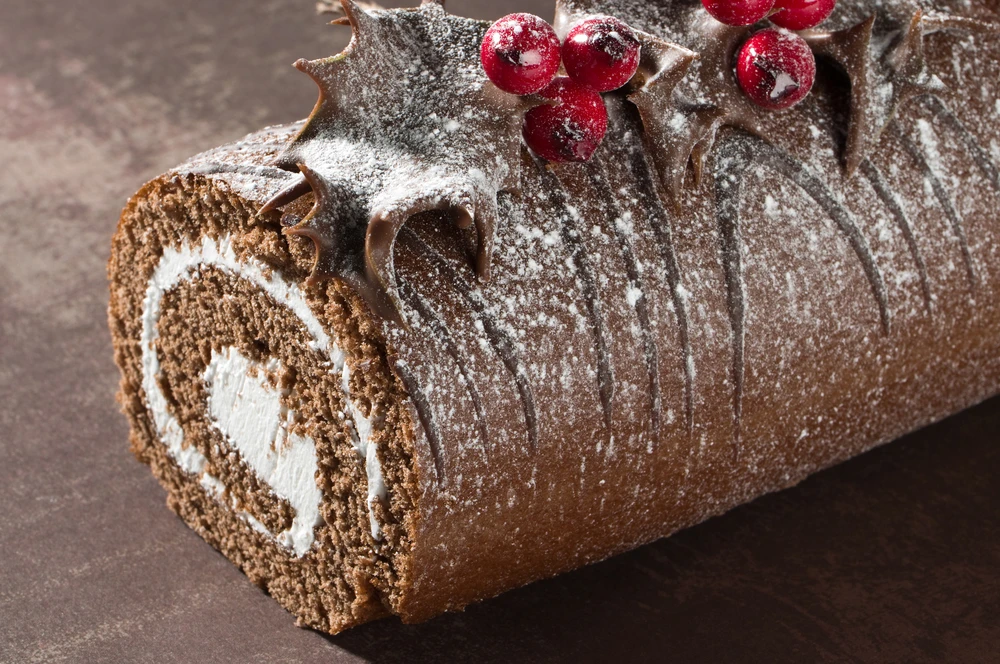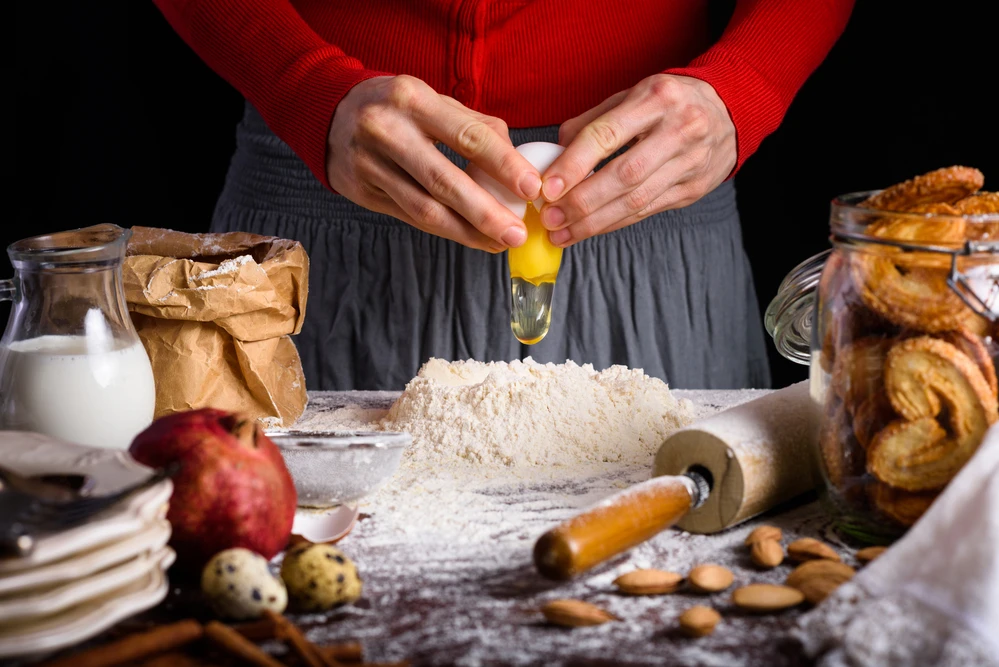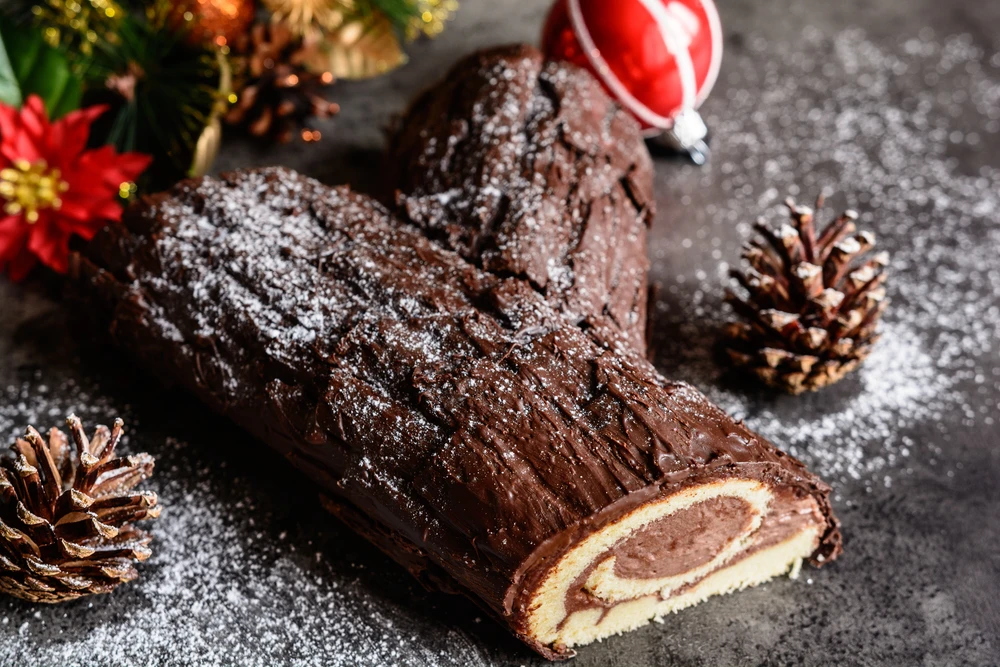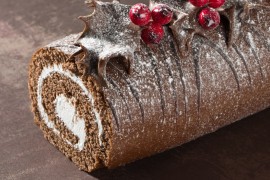Sorry for any mistranslations, but our translator wanted to taste some Yule logs to get himself in the right mood, and he had indigestion. The accountant replaced him.
A tradition that goes back to the dawn of time
Even before Christmas, many European countries (France, Great Britain, Germany...) celebrated the winter solstice.A somewhat anxious time of year for our predecessors, who spent the longest night of the year praying for the sun to return the next morning, and for it to grow stronger and stronger so as to allow Life. So a fire was lit, and kept going all night long .
A winter night. Photo chosen by monsieurdefrance.com: Haydmitry via depositphotos.
A log in the fireplace.
Over the years, this fire has taken on a symbolic role, with a large log being placed in the fireplace . A fir log was never used, since the fir tree symbolized the renewal that lasts in the heart of winter. Instead, it was chosen from an oak or fruit tree (to ensure a rich year ahead). In the Middle Ages, in France, it was even blessed with holy water (that of Palm Sunday). It was also listened to, since the more it cracked and farted, the better the year would be. Even after burning, the log was used throughout the year: its ashes were used to make remedies or simply to protect the house from lightning.
In Normandy and Provence, when the log was lit, children were asked to go to a corner of the house to pray for a rich year ahead, and when they returned to the fireplace, they were offered sweets or candied fruit .
A log in the fireplace. Photo chosen by monsieurdefrance.com: Depositphotos.
A dessert since the 19th century
While we don't know who invented the Yule log, it's clear that it was thought up in France.Some say it was in 1834, in a pastry shop in Saint Germain des Prés; others think it was Félix BONNAT, a chocolatier in Lyon, who created it around 1860; others that Pierre LACAM, a chef and ice-cream maker, was the first to bake it, in 1896. It should be noted, however, that cakes related to the Yule log were already being concocted in Lorraine and Belgium long before this, but they didn't have the shape of the log we know today (for example, a Jesus made of sugar, in a hollowed-out log like a cradle...).
What is a traditional French log?
Our grandmothers' logs were made from sponge cake, wrapped in buttercream and brushed with buttercream, then flavored with chocolate or coffee.Rum or Grand Marnier was often added. The shape of a log was drawn in wood and decorated with small pieces of sugar, such as mushrooms. Small plastic figures were added later.
The traditional log with chocolate buttercream. Photo chosen by monsieurdefrance.com: depositphotos.
Nowadays
With an average price of 25 euros, logs are sold at a rate of 3 liters per second in December , for a total of 10,000,000 liters (source: Planetscope.com), which remains impressive even if, for some years now, the traditional log has been competing with other desserts, notably ice creams.It has to be said that pastry chefs are competing with each other to create original logs and keep this tradition up to date. More and more logs are being made with citrus fruits (lemon, orange, etc.) or with slightly exotic blends such as chocolate and apricot. They're now also available iced or even... Triangular.
Our easy recipe for a chocolate Yule log
In the kitchen baking with Monsieur de France. Photo chosen by monsieurdefrance.com: JulyLeoBO via depositphotos.
Ingredients:
For the chocolate ganache :
- 60 grams of butter
- 250 grams full cream
- 250 grams dark pastry chocolate
For the biscuit
- 4 eggs
- 40 grams hazelnut powder
- 80 grams of flour
- 120 grams of sugar.
- 1 pinch of salt
A chocolate log. Photo chosen by monsieurdefrance.com: NoirChocolate via depositphotos.
The process
We start with the ganache
- Cut the butter into pieces
- Melt the dark chocolate (in a bain-marie or in the microwave).
- Heat the cream in a saucepan
- In another saucepan, over a low heat, pour in the melted chocolate.
- Add 1/3 of the cream and mix
- Add another 1/3 of the cream and mix
- Add the rest of the cream and stir.
- Now add the butter in pieces and stir in.
- Place in the fridge (and take the mixture out 2 or 3 times to mix again).
Then the biscuit
- First, preheat your oven to 180 degrees.
- Line one of the baking trays with baking parchment.
- Sift the flour well.
- Sift in the hazelnut powder too
- Mix them together.
- Then separate the whites from the yolks
- Mix the 4 yolks with the 120 grams of sugar until the mixture is white.
- Beat the egg whites until stiff, adding a pinch of salt and beating well.
- When the egg whites have set, add them to the yolk and sugar mixture in batches, taking care not to let the egg whites fall back.
- Add the flour and hazelnut powder mixture.
- Pour the dough onto the greaseproof paper on your baking tray.
- Bake for around 10 minutes (the biscuit should be lightly coloured)
- Meanwhile, run a large clean cloth under water
- Squeeze the
- Lay it flat
- When the biscuit is cooked, turn the baking tray over onto the damp tea towel.
- Trim the edges (which will be more cooked) by just over a centimetre.
- Gently roll the biscuit in the tea towel to give it the shape of a log.
- Put in a cool place
Finally, assembly
- Cover the biscuit well with the ganache, but remember to keep 30% to cover the buche afterwards.
- Roll up the biscuit
- Cut both ends of the log to make it more attractive
- Cover the log with the remaining ganache.
- Use a fork to make ridges to give the effect of a wooden log.
- Keep in a cool place. It can be kept overnight.
- You can decorate with icing sugar and a few small figures.


